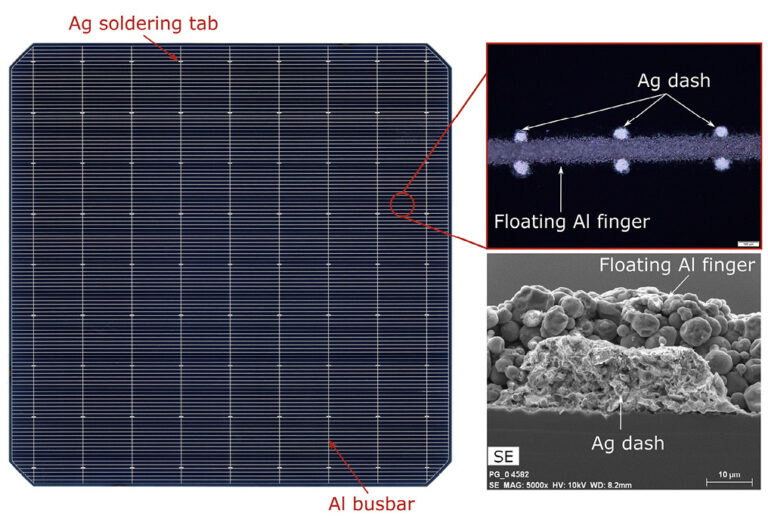A team from the University of New South Wales (UNSW) School of Photovoltaic and Renewable Energy Engineering has reinvented the design of screen-printed contacts to reduce costs and silver consumption, without sacrificing the efficiency of TOPCon (tunnel oxide passivated contact) solar cells. to sacrifice.
New research from UNSW, published in July 2024, has proposed an existing process to further scale up TOPCon solar.
The researchers say their approach to solar cell construction – described in Ultra-lean silver screen printing for sustainable photovoltaics on Terawatt scalepublished in RRL Solar – could reduce TOPCon silver content from 12 mg/W to 15 mg/W to 2 mg/W. That would keep the solar industry’s silver consumption below 20% of global supply as PV expands.
The authors of the article claim a cell efficiency of 24.04% with their approach and say that cells manufactured in Chinese partner facilities have an efficiency of 26.7%.
The research involved partners from metal paste production and PV production. It was led by Brett Hallam, Associate Professor at the UNSW School of Photovoltaic and Renewable Energy Engineering.
“The sector generally has not thought ahead,” says Hallam. In 2021, he conducted research into the technology that PV manufacturers should adopt in addition to passivated emitter back contact (PERC) solar. The study, “Design Considerations for Multi-terawatt Scale Manufacturing of Existing and Future Photovoltaic Technologies: Challenges and Opportunities Related to Silver, Indium and Bismuth Consumption,” was published in Energy and Environmental Science.
In this article, Hallam rejected expectations that more efficient heterojunction (HJT) solar power would replace PERC, arguing that the indium needed in the indium tin oxide layer – a transparent, conductive oxide – would enable only 200 GW of production before the indium in the world would be exhausted. reserves.
“There is always a big push for solar cell efficiency,” says Hallam, as people see “the abyss that comes with the exponential growth of installations needed to mitigate climate change.”
The team’s eureka moment came in 2020, thanks to the PhD research of Yuchao Zhang, co-author of both papers mentioned above.
To read further, visit our pv magazine Australia website.
This content is copyrighted and may not be reused. If you would like to collaborate with us and reuse some of our content, please contact: editors@pv-magazine.com.


